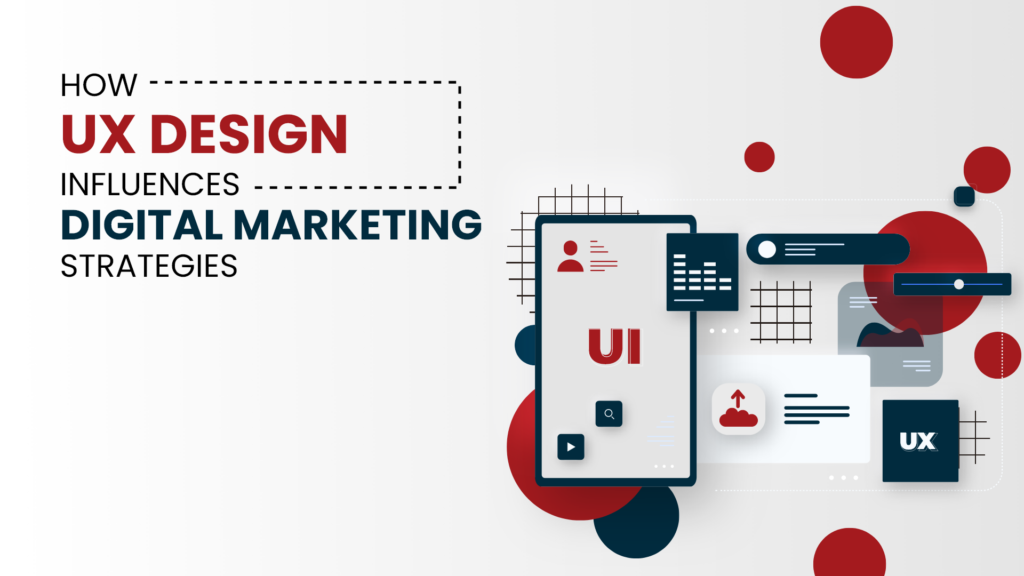Table of Contents
Let’s be honest—no one likes clunky websites, slow-loading pages, or confusing menus. We’ve all been there: you click on an ad, land on a messy page, can’t find what you need, and just… leave. That right there? It’s the power of UX in digital marketing—for better or worse.
Today, it’s not enough to just grab attention. You have to hold it. And that only happens when your digital experience is smooth, helpful, and feels effortless. That’s where user experience, or UX, becomes a total game-changer in digital marketing.
Let’s break it all down in real-world terms.
What Exactly Is UX in Digital Marketing?
In simple words, UX (user experience) is how people feel when they interact with your website, ad, app, or email.
If it’s fast, easy, and makes sense—they stick around. If it’s slow, confusing, or frustrating—they leave.
So, when we talk about UX in digital marketing, we’re talking about all the ways you can make it easier (and more enjoyable) for someone to say yes to your brand—whether that’s signing up for your newsletter, clicking “Buy Now,” or even just reading a blog post.
Why UX in Digital Marketing Can’t Be an Afterthought
If you’re pouring time and money into digital marketing but ignoring UX, it’s like inviting people to a party and forgetting to clean the house. People show up… but they don’t stay.
Here’s why great UX matters more than ever:
1. Conversions Start With Comfort
A well-designed user experience leads to more sales, more sign-ups, and more happy customers. If your site is slow or confusing, you’re literally losing business.
2. Google Ranks Better UX Higher
Google closely monitors how users engage with your website. If they leave quickly or don’t engage, your rankings drop. That means UX in digital marketing is directly tied to your SEO.
3. First Impressions Are Everything
Online, your website serves as your brand’s first handshake. A slick, easy-to-use interface shows that you’re professional, trustworthy, and worth their time.
4. It Impacts Every Channel
Whether it’s an Instagram ad, a marketing email, or a blog post—UX is always in play. Every single digital touchpoint should be built with the user in mind.
What Does Good UX Look Like in Digital Marketing?
Let’s make this practical. Here are a few must-haves if you want to create a user experience that clicks with your audience:
Mobile-First Everything
Most people are scrolling on their phones. If your site or email doesn’t look good on mobile, you’re losing a massive part of your audience.
Lightning-Fast Load Times
We live in a world of now. If your website takes more than 3 seconds to load, you’re likely losing over half your traffic.
Clean, Clear Navigation
Make it easy to get around. Users should instantly know where to click without second-guessing.
One Clear Goal Per Page
Trying to do too much on one page just confuses people. Want them to sign up? Make that obvious. Want them to buy? Make the path simple.
Easy-to-Read Design
Use clear fonts, enough spacing, and a simple layout. No one wants to read white text on a yellow background.
All of these pieces work together to create good UX in digital marketing—and it’s those small touches that keep people around and clicking.
How to Improve UX in Your Digital Marketing Strategy
The good news? No need to overhaul your whole website in one go. Start small with these steps:
1. Watch How People Use Your Site
Tools like Hotjar and Google Analytics help pinpoint where users lose interest or exit your site.You might find that your “Buy Now” button is getting ignored—or that your form is too long.
2. Simplify, Always
If there’s anything on your site or landing page that’s not helpful or necessary—cut it. Fewer distractions = better results.
3. Test Your CTAs
Make your call-to-action (CTA) stand out and leave no room for confusion. Test different wording and colors to see what works.
4. Write Like a Human
Ditch the jargon. Talk to your users like a real person, and guide them step by step. UX isn’t just about design—it’s also about communication.
5. Optimize for Mobile (Yes, Again!)
Seriously, if you only do one thing this month—make sure your mobile experience is top-notch.
Every one of these tweaks enhances UX in digital marketing, and each one can lead to more engagement, more clicks, and more conversions.
Don’t Forget About Emails and Ads
We often think UX only applies to websites, but that’s far from the truth.
In Emails:
- Keep your layout simple and mobile-friendly
- Use short sentences and bullet points
- Include one clear CTA
- Make links and buttons easy to tap
In Ads:
- Match the ad with the landing page it leads to
- Ensure your value proposition is instantly clear—within 3 seconds or less.
- Use clean visuals that don’t overwhelm
Even a great ad campaign can flop if the landing page feels disjointed or confusing. That’s why UX in digital marketing needs to be consistent across the board.
Real-Life Brands That Nail UX in Digital Marketing
Here are a few brands you can learn from:
Canva
Whether you’re a design pro or a complete newbie, Canva makes it super easy to create anything—from Instagram posts to presentations. The magic? Seamless UX.
Spotify
They tailor your experience and make exploring new music easy and enjoyable. Their interface is simple, yet powerful—a UX dream.
Zappos
Their website is fast, their filters are intuitive, and their checkout process is a breeze. They get it right because they put users first.
Final Thoughts: UX in Digital Marketing Isn’t Optional—It’s Essential
Look, digital marketing is crowded. People are bombarded with content, ads, and choices all day long. The brands that win? They make things easy, helpful, and even enjoyable.
That’s what UX in digital marketing is all about. It’s not just design, and it’s not just tech—it’s the full experience from first click to final sale.
If you want people to stay, engage, and convert, don’t just focus on getting them there. Focus on what happens after they arrive.
Because in the end, people don’t remember flashy headlines or perfect color schemes.
They remember how your brand made them feel.

